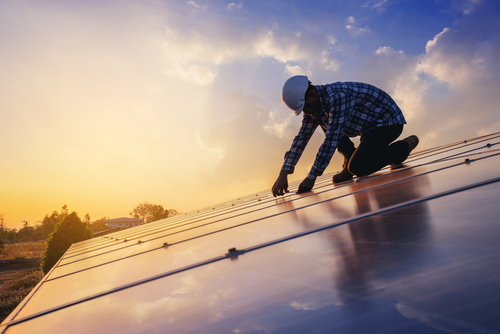The U.S. Department of the Treasury and the Internal Revenue Service (IRS) came out with final rules on prevailing wage and registered apprenticeship (PWA) requirements in the Inflation Reduction Act.

The finals rules — developed in close partnership with the Department of Labor (DOL) – provide clarity and certainty on the PWA requirements to ensure the clean energy transition is centered around workers.
In general, if taxpayers pay prevailing wages to laborers and mechanics and hire registered apprentices for projects supported by most of the Inflation Reduction Act’s clean energy tax incentives, then taxpayers can claim an increased credit equal to five times the base incentive.
This includes projects utilizing the investment and production tax credits that help finance wind, solar, and battery storage projects, as well as for credits for carbon capture, utilization, and storage and clean hydrogen projects.
The intent of the PWA requirements is to spur more clean energy projects that lead to good jobs. In Wisconsin, for example, five construction unions forged an agreement with Wisconsin’s top utility provider to ensure union workers will be hired for most future utility-scale solar, wind, and battery storage projects in Wisconsin.
In Oregon, Wheatridge Renewable Energy Facility – one of the largest hybrid wind, solar and storage facilities in America — has already put about 2,000 members of the International Brotherhood of Electrical Workers Local 112 to work.
“President Biden’s Inflation Reduction Act has driven an investment boom while ensuring that workers building the clean energy economy benefit from good pay and new opportunities to get ahead,” said Secretary of the Treasury Janet Yellen said. “Treasury’s final rules ensure we have skilled workers ready to take advantage of the jobs being created by these historic investments.”
The PWA final rules requiring that determinations of prevailing wage rates be made by DOL, consistent with the Davis-Bacon Act. They also incentivize practices that will encourage contemporaneous compliance and implement strong recordkeeping requirements. In addition, they seek to guarantee that taxpayers with projects covered by qualifying project labor agreements do not need to pay penalties. Finally, they clarify apprenticeship requirements such as clearly defining what constitutes as a request for qualified apprentices, what constitutes as a response, and when the good faith effort exception applies.
“This rule will ensure these tax breaks are providing real, tangible benefits to workers in communities across the country,” Acting Secretary of Labor Julie Su said. “From fair wages to training opportunities for workers, this administration is doing everything we can to make sure working people share in the prosperity of a clean energy future.”
Ensuring that taxpayers that claim Clean Energy credits have met their obligations is a top priority for the IRS. Thus, the IRS is announcing in the months ahead that it will dedicate significant resources to promoting and enforcing compliance with the final clean energy rules. The IRS is also releasing a new PWA Fact Sheet that provides a summary of the PWA requirements.